The Achaemenid dynasty’s Persian Empire, also known as the Achaemenid Empire, was one of the largest ancient states. The dynasties succeeded one another, and the conquests connected a landmass far greater than that held by modern-day Iran (or Persia) until the empire faded away gradually under the Sasanians. Decades of history, including encounters with luminaries like Cyrus II and Alexander the Great, encompass the Persian Empire. Persia defined both antiquity and modern history. Delve deep into this empire, from the Achaemenids to the Sasanians, from Muslim rule to the founding of Iran.
- Who was the founder of the Persian Empire?
- Who were the kings of the Achaemenid Persian Empire?
- How was the Achaemenid Persian Empire organized?
- What was the capital of the Persian Empire?
- How did the Persian Empire become Seleucid?
- How did the Parthians conquer the Persian Empire?
- How did the Sasanians take power in Persia?
- How did the Persian Empire collapse?
- Once the Muslims took over, what happened to the Persian Empire?
- Where is Persia today?
- Key dates in the history of Persia
Who was the founder of the Persian Empire?

The Persian Empire and the Achaemenid dynasty may trace their origins back to Cyrus II, often known as Cyrus the Great. In the beginning, Cyrus II defeated the Medes, and then he went on to capture the Kingdom of Lydia. The Persian Empire continued to expand with further victories on the Iranian Plateau and in Central Asia. Cyrus II, a person in myths and stories from antiquity and the modern day, died in combat around 530 BC.
Who were the kings of the Achaemenid Persian Empire?
After Cyrus II’s death, numerous kings took his place as leaders of the Achaemenid Empire. Cambyses II, Cyrus II’s first heir apparent, made a name for himself by conquering Egypt. Darius I, who dethroned Bardiya, used his newfound power to launch an invasion of Macedonia and the Cyclades. It was his son Xerxes I who lost the Second Persian War against the Greeks. The subsequent Achaemenid monarchs, like Sogdianos, Darius II, and Arses, had varying degrees of success.
How was the Achaemenid Persian Empire organized?

By 550 BC, under King Cyrus II, the Achaemenid Persian Empire had emerged after his conquest of the Medes, and by 330 BC, the Empire had been wiped out by Alexander the Great’s conquests. During this time, the Achaemenid Persian Empire was run on a system of satrapies, with the general populace submitting to the authority of the Persian monarch. Justice and the pursuit of virtue were central tenets of Mazdaism, the religion of the Achaemenid Persian Empire. Lydia, now a part of western Turkey, was where the first coins in history were originally created, and from there they spread over the Persian Empire.
What was the capital of the Persian Empire?
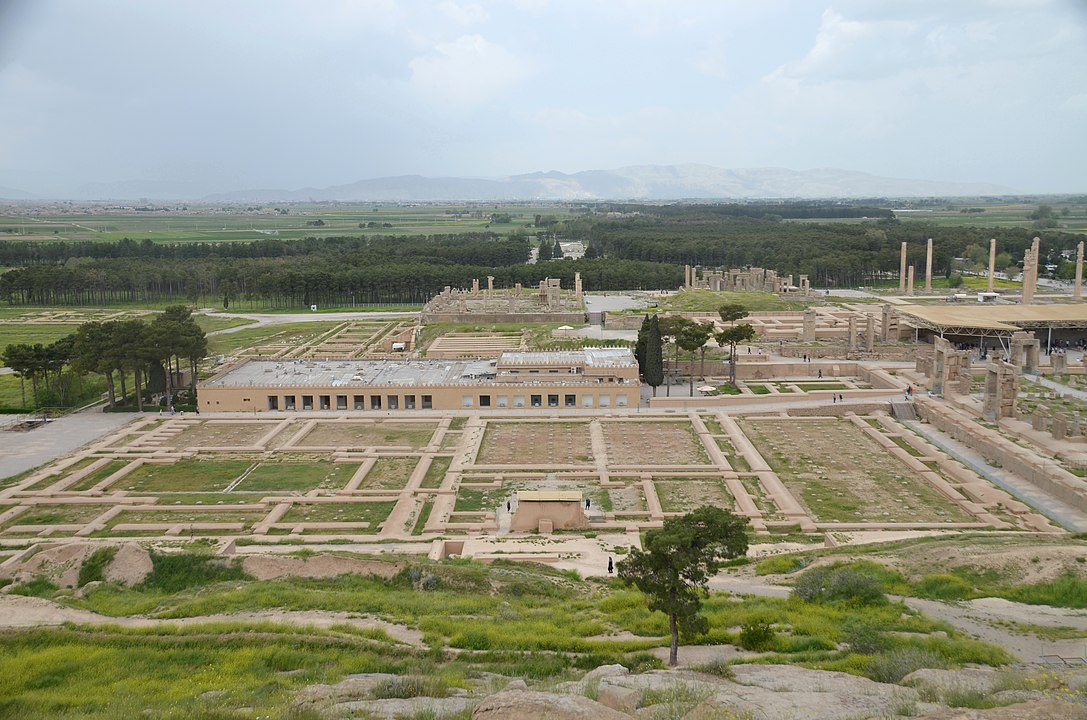
Ancient Pasargadae, in what is now Iran’s Fars Province, served as the initial capital of the Persian Empire. Various towns in Persia had succeeded as the country’s capital throughout the years. The Achaemenid Persian Empire’s most famous capital was Persepolis, whose name in Greek meant “the city of the Persians” and was built by Darius I. Even lesser-known cities like Ecbatana, Susa, and Babylon had their share of fame throughout history.
How did the Persian Empire become Seleucid?
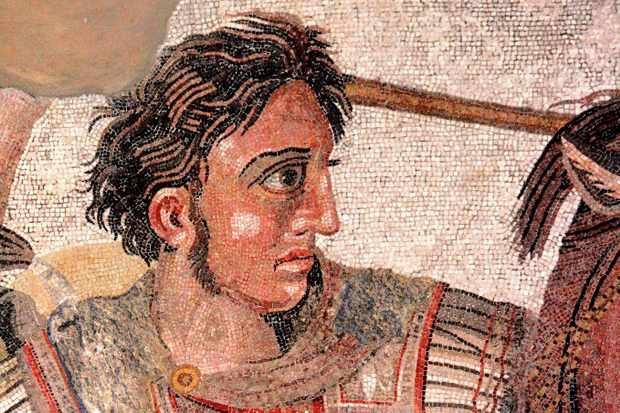
After defeating Darius III at the Battle of Gaugamela in 331 BC, Alexander the Great was widely recognized as the last ruler of the Achaemenid Empire. In the next 20 years, Seleucus I established the Seleucid Dynasty. By the 1st century BC, the Seleucid dynasty—including Seleucus I, Antiochus I, Demetrios I, etc.—had ruled over Babylonia and Mesopotamia for many centuries. These people gained notoriety for their roles in the Syrian Wars (168 BC–274 BC) and the establishment of the Greco-Bactrian Kingdom.
How did the Parthians conquer the Persian Empire?
The Parthians, once a nomadic tribe, established a kingdom in approximately 250 BC under the leadership of Arsace I. The Parthians, led by Mithridates I, took advantage of the Seleucids’ defeat to the Romans to declare their independence and establish themselves as the lords of Bactria and Mesopotamia. What they founded was an empire whose civilization was a synthesis of the Persian, Greek, and Armenian traditions. Ardashir I deposed the last Parthian monarch in 224 BC and established the Sasanian dynasty.
How did the Sasanians take power in Persia?
After defeating Artabanus IV, the last Parthian ruler, in 226 BC, Ardashir I established the Sasanian Empire and became its king. The Sasanians restored the Persian Empire to its former glory over the course of roughly four centuries. Religious leaders, soldiers, and farmers were the three main castes of Sasanian society, which was structured on a monarchical system. It marked the pinnacle of agricultural advancement and of Zoroastrianism as the official religion.
How did the Persian Empire collapse?
Muslims (or Arab-Islamic peoples) first started conquering Persia in about the year 637 AD. The final Sasanian monarch, Yazdegerd III, fought the Muslim caliphate and its development of the Islamic Empire for a long time. Once again, Yazdegerd III was beaten, this time at the Battle of Nahavand after losing at the Battle of al-Qadisiyya. As a result of these two setbacks, the Persian Empire began to crumble.
Once the Muslims took over, what happened to the Persian Empire?
Once Yazdegerd III passed away in 651 AD, all of Persia was free from Islamic rule. The Muslim caliphate cast doubt on Zoroastrianism and extended an invitation to convert to Islam to a broad segment of the Persian populace. In the realm of the erstwhile Persian Empire, Iranians and Arabs lived together for a long time without mixing. For instance, during that time, Persian rather than Arabic was recognized as the official language of Persia.
Where is Persia today?

Modern-day Iran is a modern-day reference to ancient Persia. General Reza Shah Pahlavi led an uprising against Russian and British rule in the early 1920s. He declared independence for his country. He was so committed to modernizing his nation that he declared to the world that the land formerly known as Persia would henceforth be known as Iran. In Iran, countless items (vases, figurines, etc.), architectural remnants, and archaeological sites such as Haft Tappeh bore testament to the stamp of ancient Persia.
Key dates in the history of Persia
539 BC – The Persians conquer Mesopotamia
The Jewish people were permitted to return to their ancient homelands when the Persians conquered Mesopotamia. Not everyone followed this path; some stayed in Babylon or the countries that received them during the diaspora. After many years in exile, many exiles returned to Jerusalem to worship in the newly built Temple of Jerusalem. Although a new memorial was built, it paled in comparison to the Old Temple, and the monarchy never returned to the country again.
525 BC – The Persians conquer Egypt
Ancient Egypt had been weakened by invasions and battles of succession prior to its fall into Persian control. Then, King Cambyses II ruled over the whole region. Even though the last native pharaohs had forced the Persians out, they were able to take back Egypt a few years later.
498 BC – Capture of Sardis
The Greeks invaded the city of Sardis in Asia Minor as part of their war against the Persians. They burned down the lower town but were unable to take the citadel. Angry with the Greeks for their invasion of Sardis, Darius took his revenge at the Battle of Ephesus. After that, the Persian monarch Darius instituted a strict regime of punishment and control over the Greek population.
494 BC – Sack of Miletus
Aristagoras’ uprising in Ionia culminated in the destruction of Miletus at the hands of the Persian Army. The commencement of the Middle Ages can be traced back to this event, which is often referred to as “The Sack of Miletus.” The Achaemenid rulers would use this opportunity to retaliate against Athens for interfering with the revolts of the Greek towns in Asia.
490 BC – Darius destroys Byzantium
Darius I of Persia launched an invasion of the Greek city of Byzantium. Darius’s major goals during the First Persian War were to (1) seize possession of a city that had a geographically advantageous location between Asia and Europe and (2) send a strong message to Athens, which backed the Ionian Revolt.
September 13, 490 BC – Battle of Marathon
Miltiades led 10,000 Athenian hoplites into battle against invading Persian forces on the plain of Marathon. The Persians were outnumbered, yet they still lost badly. The First Persian War ended here, and Athens reached its zenith. This fight inspired the tale of Philippides, whose name is associated with the creation of the marathon race.
486 BC – Death of Darius I
After his father Darius I passed away, his son Xerxes I inherited leadership of the Persian Empire with the intention of exacting revenge for his father’s defeat at the hands of the Greeks. Xerxes I began the Second Persian War, which included an assault on Athens. The Achaemenid dynasty oversaw the rise of the Persian Empire, which lasted until Alexander the Great’s invasions in 330 BC.
483 BC- Discovery of the mines of Laurion
The Athenians discovered silver mines on their own land in Laurion. They used the wealth from these mines to improve life in Athens and to construct 200 warships (triremes) to bolster the Greek fleet. Themistocles made this strategic choice that would pay off at Salamis, the climax of the Second Persian War.
July, 480 BC – Junction of the Persian troops
The Persians had regrouped at Thessalonica, giving them access to 600 ships and 150,000 men. Greek forces, however, decided to pull back from the country’s northern coast and reorganize on the other side of the Pass of Thermopylae. The Greeks wanted to use the narrow nature of the area to their advantage.
September 17, 480 BC – Beginning of the Battle of Artemisium
In anticipation of the Persian fleet, 300 Greek triremes sailed to the cape of Artemisium to begin the Battle of Artemisium. The Greek fleet was forced to retreat in front of the opposing fleet, but in doing so they were able to slow the march of the Persian army. A storm hit a few days after this engagement, destroying most of the Persian fleet that had decided to go inland.
September 19, 480 BC – Heroic defeat of Leonidas at Thermopylae
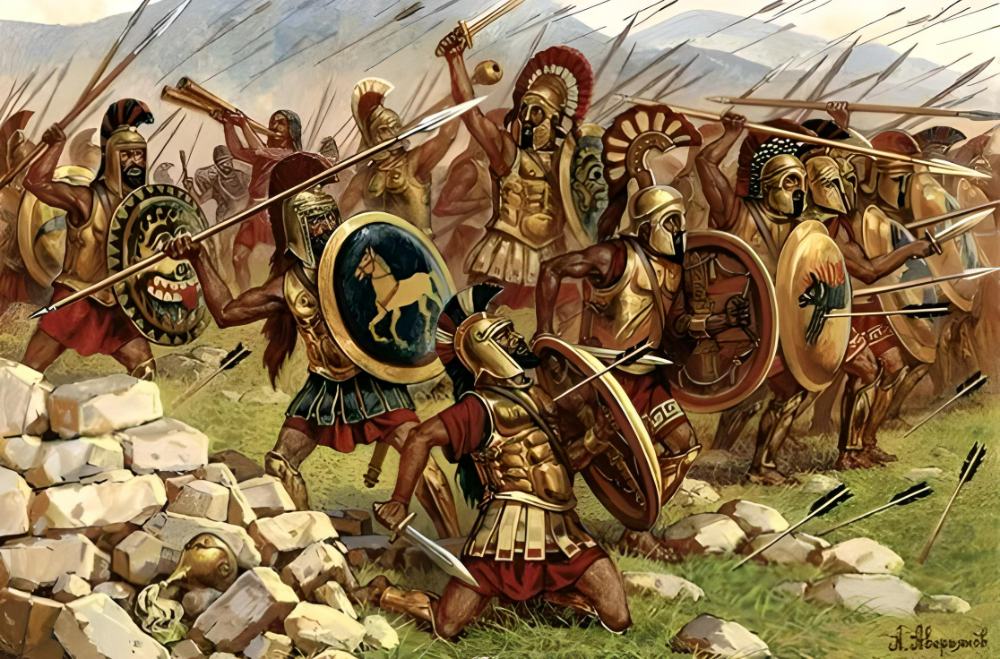
The Greek army had been forced to retreat toward the Isthmus of Corinth after a (possible) treachery. King Leonidas I of Sparta, aided by 700 volunteers, resisted the 10,000 Persians that had surrounded him. Leonidas I and his men fought to the death, and their sacrifice permitted the bulk of the Greek forces to retreat. The Parthenon was among the many buildings the Persians burned during their invasion of Athens.
29 September, 480 BC – Victory of the Greeks in Salamis
The Greeks, realizing their numerical disadvantage against the Persian fleet, feigned to retreat. In actuality, their goal was to guide the Persians across the very constricted Strait of Salamis. Parts of Persian ships were destroyed in this conflict because they were lured into the trap prepared by the Athenian strategist Themistocles.
August 27, 479 BC – Death of Mardonius in Plataea
Mardonius, an esteemed Persian leader, was killed while leading his army against a force of Lacedaemonians. Greek forces under Pausanias’ command took advantage of this to beat the Persians at Plataea, thereby ending the status quo between the two camps after the Greek victory at Salamis. This incident inaugurated the Persian Army’s retreat from the Ionian metropolises.
478 BC – The Spartan Pausanias takes Byzantium
After his impressive performance at Plataea, Pausanias was given leadership of the Greek forces so that they might continue their war against the Persians. Pausanias, a regent of Sparta, marched on Cyprus and captured Byzantium. The city, devastated by Darius a few years before, was being rebuilt.
478 BC – Formation of the Delian League
Several Greek communities decided to form a league in response to the rising imperialism of the time and their fleet’s victory at Salamis. Themistocles and Aristeides took the first move toward establishing the Delian League by initiating this treaty. This new organization, which gave Athens control over the army, solely applied to the fleet and had nothing to do with the regular soldiers.
472 BC – Aeschylus presents The Persians
Aeschylus suggested that The Persians be staged at Athens. References to the Second Persian War could be found in this Greek play, the earliest one for which we have a text. Aeschylus, who was there throughout the conflict, used his first-hand knowledge to write a tragedy that forever changed the genre. In fact, it was the first occasion in history that so many performers were onstage at the same time.
336 BC – Alexander the Great becomes king of Macedonia
The 20-year-old Alexander the Great succeeded his father as King of Macedonia. Without hesitation, he eliminated his enemies, put down the insurrection at Thebes, and kept up the war against the Persian Empire that his father began.
334 BC – Beginning of the war against the Persians
Alexander the Great fought the Persians beginning in 334 BC. With a force of 30,000 soldiers and 5,000 horsemen at his disposal, he rode forth in the direction of Asia and won the Battle of the Granicus, therefore enabling him to destroy Darius’s army. Alexander the Great’s conquests, which lasted a decade and required him to walk more than 6,200 miles (10,000 kilometers) on foot, were bolstered by this victory against the monarch of Persia.
332 BC – Alexander the Great conquers Judea
In the end, Alexander the Great was successful in his conquest of Judea. In this area, which the Persians had evacuated, the Jews were allowed a certain degree of independence. Many of them decided to make Alexandria their permanent home at that time. The influence of Hellenistic culture on Jews inside the kingdom led to tensions between Jews who embraced this culture, also known as Hellenistic Jews, and those who did not.
332 BC – Alexander arrived in Egypt where he was acclaimed as a liberator
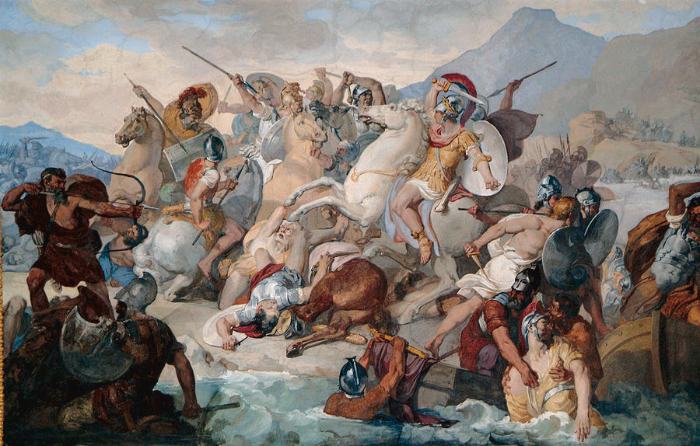
The Persian Army suffered yet another loss at the hands of Alexander the Great and his army at Issus (Cilicia). Darius was forced to evacuate Egypt since he was helpless against Alexander the Great’s invasion. The first Greek colony of Alexandria was founded by the King of Macedonia on the land where he was hailed as a liberator and acknowledged as a descendant of Amon.
October, 331 BC – Victory of Alexander the Great at Gaugamela
Alexander the Great was successful in defeating the King of Persia in Mesopotamia for the third time since the beginning of the war. Darius III was on the run in the mountains while Alexander the Great expanded his control over the Middle East and Egypt. As a result, Alexander the Great took control of the Achaemenid Empire’s wealth and was crowned the King of Asia.
330 BC – In pursuit of Darius
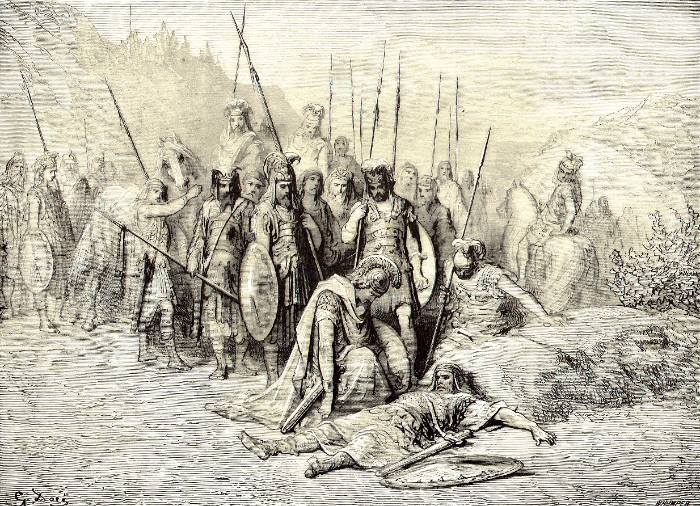
Alexander the Great knew that he had to locate Darius if he was to succeed Darius as King of Persia. The new King of Asia set out on an expedition to find Darius. Darius, along with a small group of loyalists, had fled into the mountains just as Alexander the Great was about to arrive.
Before Alexander the Great arrived, Darius was murdered. Alexander decided to restore Darius’ royal status and vowed to seek revenge for his murder. To this end, he tracked down and killed the satrap Bessus in Bactria, who was suspected of being behind Darius’s murder.
329 BC – Three years to pacify Persia
Over the course of three years, Alexander the Great battled hard to conquer the regions of Hyrcania, Aria, Arachosia, Bactria, and Sogdiana. The new ruler of Persia established several Alexandrias over the course of his conquest. A yearning to return home was the last straw in Alexander the Great’s long and exhausting campaign to bring peace to Persia.
326 BC – A trying return home
Alexander the Great’s army was divided into three factions en route to the Indus Valley. Alexander the Great went toward the desert of Gedrosia, while Nearchus traversed the Persian Gulf and Craterus crossed the Balon Pass with his elephants. Alexander the Great and his army arrived in Susa in 324 BC and they immediately began planning the next invasions. Alexander the Great, on the eve of new conquests, embraced the quest of bringing together Macedonians, Greeks, and Asians into one nation.
326 BC – Alexander invades Punjab
Alexander the Great had crossed all of Persia and was now in the East. Alexander invaded Punjab despite opposition from King Porus and the deployment of elephants as a weapon of resistance. As a result of the battles, Alexander the Great had to abandon his quest for India because his warriors were too tired to continue. The Seleucid dynasty began with Alexander the Great’s landing in Punjab.
May 5, 614 – The Persians seize the True Cross
Jerusalem, a holy city for Christians, fell to the Persians under King Khosrow II (Chosroes II), who went on to steal the “True Cross” relic in 614. The churches were burned down, and 35,000 people were sold into slavery. Heraclius I, the Byzantine emperor who in 627 had beaten the Persians at Nineveh, later returned the True Cross to Jerusalem in 630. In 638, the city was conquered by Muslims.
December 12, 627 – Victory of Heraclius over the Persians
Heraclius I, Emperor of Byzantium, defeated Khosrow II, King of Persia, in a battle for control of Nineveh in 627 in the Middle East. In a triumphal march into the Sasanian Persian capital of Ctesiphon, Alexander compelled the Sasanians to hand over Egypt to the Byzantine Empire. After it had been looted by the Persians in 614, Heraclius I returned to Jerusalem with the True Cross in 630.
632 – Abu Bakr succeeds Muhammad
It was Abu Bakr, the Prophet’s father-in-law, who was named Caliph. He was able to calm tensions between Medina and Mecca that had arisen about who would follow Mohammed. Then, all of Arabia was forcibly converted to Islam. Omar, a devoted companion of the Prophet, was named his successor and went on to conquer Syria, Egypt, and Persia. After Omar’s death in 644, his successor, Uthman, carried on with the conquests.
1055 – Tughril Beg is recognized as Sultan in Baghdad
A Sunni Turkish Seljuk dynasty member, Tughril conquered Baghdad and was acknowledged as ruler by the Abbasid Caliph. This dynasty had previously ruled over Persia. By 1038, he had already overthrown the Buyid dynasty and taken control of Nishapur. The Fatimids were the first to build a Sunni Muslim empire in the region, and the Seljuks would follow in their footsteps by creating a massive state across Asia Minor and Syria. Conflicts over inheritance, the presence of the Franks, and local uprisings all contributed to the fragmentation of the region beginning in 1092.
1501 – The Safavids reign over Persia
The Safavid dynasty, founded by Ismail I, established a Shiite kingdom after the expulsion of the Timurids. The kingdom depended on “Twelver,” a philosophy that would become central to Iranian Shiism. Isfahan replaced Shiraz as the dynastic capital several years later. The Safavids, however, were wiped off by Afghan invasions in the 18th century and never recovered.


